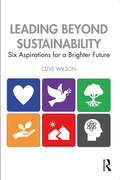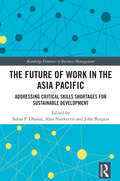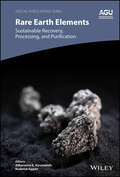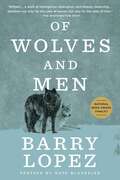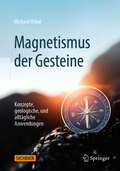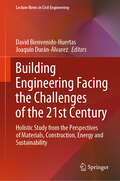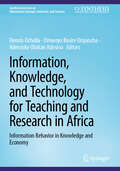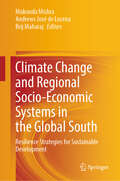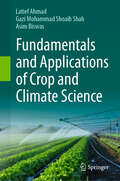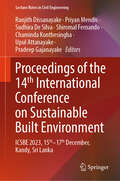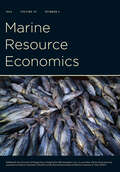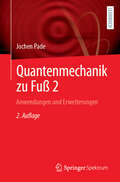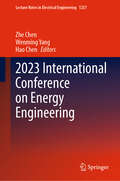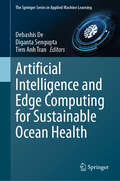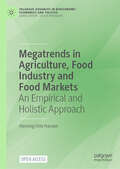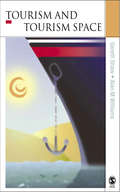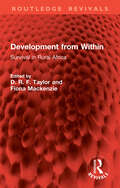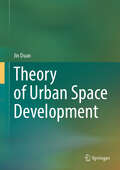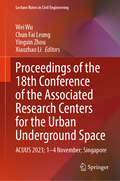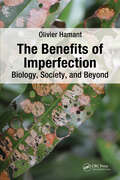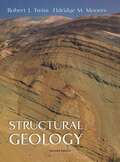- Table View
- List View
Leading Beyond Sustainability: Six Aspirations for a Brighter Future
by Clive WilsonThe 2020s present a decade of unprecedented disruption. We have now reached a point where people are overwhelmed and numb to the ever-present news of threat after threat, and challenge after challenge. It’s time for leaders to tell a different story of six powerful aspirations – connection, vitality, peace, abundance, opportunity and wisdom. This is a vision "beyond sustainability", to inspire organisations and people to bring the best of who they are into service of the brighter future that is already emerging.Alongside the obvious disruptive challenges of climate change, wars and the pandemic, technology has evolved at a blistering pace. Through technological advances in five sectors – energy, transport, materials, food and manufacturing – we are already transforming the world as we know it. The book seeks to give readers the confidence that there is real hope for a brighter future for our world using these developments and other innovations.The text is supported by inspiring case studies of people and organisations who are already doing amazing things. Crucially, the book highlights the many ways that leaders and organisations can contribute to a better world and encourages dialogue between organisations and people who might not naturally connect. It describes 12 archetypes in organisations that must collaborate in teams to deliver solutions. It also emphasises the need for wise leadership and conscious alignment of everyone to our "brighter future".A manifesto for positive change, this is the perfect book to help turn the UN Sustainable Development Goals into action and to envisage a positive future for leaders at every level in organisations.
The Future of Work in the Asia Pacific: Addressing Critical Skills Shortages for Sustainable Development (Routledge Frontiers of Business Management)
by John Burgess Alan Nankervis Subas P. DhakalBringing together informed analyses on the challenges of critical skill shortages (CSS) in the Asia-Pacific region, this book provides 14 country reports to discuss the critical jobs and skills to achieve long-term policies and approaches towards realising the United Nations sustainable development goals (SDGs).The contributors of the volume discuss the workforce projections and planning, existing programmes that address the skills and jobs needed, and workforce policy challenges that need to be addressed to achieve the SDGs. The book identifies two types of CSS present in the workforce: one being skilled labour shortages in existing industries and the second being soft skills like critical thinking and problem-solving skills. Extending the discussion beyond immediate skill shortages, the book assesses longer-term policies and approaches to tackle the 2030 United Nations Agenda for Sustainable Development.This book will interest researchers in the fields of human resource management and development, international business, development studies, and policymakers from the Asia-Pacific region.
Rare Earth Elements: Sustainable Recovery, Processing, and Purification (Special Publications #79)
by Athanasios K. Karamalidis Roderick EggertRare Earth Elements Sustainable Recovery, Processing, and Purification Rare earth elements are used in many modern technologies including electronics, clean energy, defense, aerospace, and automotive. It is important that increasing demand is met in ways that are more environmentally, socially, and economically sustainable than in the past. Rare Earth Elements: Sustainable Recovery, Processing, and Purification describes sources of rare earths and methods of production that have the potential to make recovery, processing, and purification more sustainable. Volume highlights include: Global overview of rare earth production, reserves, and resources Improvements in the recovery process to reduce costs and environmental impacts Potential new sources of rare earths that were not previously technically feasible Options for recovery of rare earths as byproducts of other activities Contributions from experts in academia, industry, government, research, and nonprofit organizations The American Geophysical Union promotes discovery in Earth and space science for the benefit of humanity. Its publications disseminate scientific knowledge and provide resources for researchers, students, and professionals.
Of Wolves and Men
by Barry LopezOriginally published in 1978, this classic exploration of humanity&’s complex relationship with and understanding of wolves returns with a new afterword by the author.Humankind's relationship with the wolf is the sum of a spectrum of responses ranging from fear to admiration and affection. Lopez&’s classic, careful study has won praise from a wide range of reviewers and improved the way books on wild animals are written. Of Wolves and Men explores the uneasy interaction between wolves and civilization over the centuries, and the wolf's prominence in our thoughts about wild creatures. Drawing upon an impressive array of literature, history, science, and mythology as well as extensive personal experience with captive and free-ranging wolves, Lopez argues for the wolf's preservation and immerses the reader in its sensory world, creating a compelling portrait of the wolf both as a real animal and as imagined by different kinds of men. A scientist might perceive the wolf as defined by research data, while an Eskimo hunter sees a family provider much like himself. For many Native Americans the wolf is also a spiritual symbol, a respected animal that can strengthen the individual and the community. With irresistible charm and elegance, Of Wolves and Men celebrates careful scientific fieldwork, dispels folklore that has enabled the Western mind to demonize wolves, explains myths, and honors indigenous traditions, allowing us to understand how this remarkable animal has become so prominent for so long in the human heart.
Magnetismus der Gesteine: Konzepte, geologische, und alltägliche Anwendungen
by Michael UrbatHaben Sie sich jemals gefragt, wie Sie Ihren Freunden und Bekannten erklären können, worauf Sie sich in Ihrem naturwissenschaftlichen Fachgebiet spezialisiert haben? Und haben Sie versucht zu vermitteln, warum dieses Nischenthema unglaublich spannend ist und einen direkten Bezug zum täglichen Leben hat? Genau hier setzt dieses Buch an: Es lädt Sie ein, einen genaueren Blick auf unsere Umwelt zu werfen, ohne sich in technischen Details zu verlieren, sondern eher, um das zugrunde liegende Prinzip zu verstehen. Es bringt Ihnen die Welt der Paläo- und Gesteinsmagnetik näher, ganz gleich, ob sich Ihre Vorstellung von Geologie zwischen bewegenden Erdplatten, Dinosauriern und Steinen bewegt. Das Buch begleitet Sie auf einer unterhaltsamen Reise von den globalen Phänomenen des Erdmagnetfeldes bis hinunter auf die subatomare Ebene der Elektronenbewegungen in Mineralen. Es liefert Ihnen ausgewählte geologische Szenarien für dynamische geologische Prozesse unseres Erdsystems von der Entstehung von Gesteinen in ruhigen Seen bis hin zur Gebirgsbildung. Für das Verständnis sind keinerlei mathematische Formeln erforderlich, obwohl Begriffe wie Paramagnetismus, Ferromagnetismus, Koordinatentransformationen und Anisotropie erklärt werden müssen. Das Buch bedient sich anschaulicher Analogien aus dem Alltag, um komplexe Sachverhalte verständlich zu machen. Ein gelungener Einstieg in die faszinierende Welt der Paläo- und Gesteinsmagnetik in der Geologie für interessierte Laien, Hobby-Geolog*innen, Geowissenschaftler*innen und angrenzende Disziplinen.
Building Engineering Facing the Challenges of the 21st Century: Holistic Study from the Perspectives of Materials, Construction, Energy and Sustainability (Lecture Notes in Civil Engineering #345)
by David Bienvenido-Huertas Joaquín Durán-ÁlvarezBuilding engineering is a complex and constantly evolving branch. The needs of the XXI century society cause a constant change in construction industry due to the need to achieve sustainable and ecological buildings. This affects all levels and phases of this engineering. Given this circumstance, numerous researchers turn their efforts to find optimal solutions for building engineering. For this reason, in this book a holistic analysis of building engineering is carried out from the perspectives that have a greater weight for sustainability objectives. The book is divided into 6 sections: (i) Building materials, which deals with research related to the most innovative and sustainable building materials; (ii) Design and construction, which deals with existing methodologies and advances in design and construction in construction sector; (iii) Building repair and maintenance, which deals with building repair, maintenance and upkeep techniques; (iv) Energy efficiency, which analyses the latest research on the energy efficiency of buildings and their behaviour in the face of climate change; (v) Sustainability, which analyses the establishment of measures to achieve a more sustainable built environment; and (vi) construction management, which compiles the latest studies in the field of Project manager. The 38 chapters of the book together constitute an advance for the topic of building engineering. The aspects covered in the book are of great interest to various sectors, such as researchers, engineers, architects, legislators and interested parties.
Information, Knowledge, and Technology for Teaching and Research in Africa: Information Behavior in Knowledge and Economy (Synthesis Lectures on Information Concepts, Retrieval, and Services)
by Dennis Ocholla Omwoyo Bosire Onyancha Aderonke Olaitan AdesinaThis book focuses on information seeking and the knowledge economy for teaching and research in Africa. The book first explores the evolution and current state of information-seeking behavior research, demonstrating its importance in informing practice, policy, and design of information systems. Despite the informal sector’s substantial contributions to the national economy in Uganda, there is a lack of studies delving into its information needs, as well as an information gap in government, NGOs, and other stakeholders. The book proposes that an appropriate information behavior model for information-poor communities such as informal entrepreneurs must be grounded on oral traditions and indigenous knowledge and should be sensitive to poverty, infrastructure, and illiteracy. The negative impact of the lack of financial literacy skills for women entrepreneurs is investigated and solutions for this problem are suggested, including regular assessments of women entrepreneurs’ financial literacy skills and the introduction of training courses. The role of academic libraries in universities, library services for students with disabilities, and accessibility of library services to students with disabilities is discussed, and theoretical models for enhancing service in academic libraries are presented. The book highlights the specific challenges and opportunities related to information literacy for secondary schools and concludes by examining the rapid changes in library and information science research in South Africa.
Climate Change and Regional Socio-Economic Systems in the Global South: Resilience Strategies for Sustainable Development
by Mukunda Mishra Andrews José de Lucena Brij MaharajThis volume showcases how the climate change phenomena (CCP) have been causing multifaceted threats to humankind through increasing numbers of extreme events, affecting social, economic, and human development worldwide. The Global South is especially showcased in this contributory volume where adverse effects of CCP and related disasters impact majority of the population which depends on land and natural resources for their livelihoods. This book asserts that climate change and extreme events are potential threats to sustainable human development and micro spatial observations and analysis of impacts of CCP are vital for adopting resilience policies. This book, not enquiring why CCP is happening, embarks on a quest to showcase how best to respond to such phenomena through detailed and well-founded micro-spatial investigations on poor farmers, pastoralists, fishermen folk, migrant labours, slum dwellers, who are considered the most threatened by climate changes and weather shocks, based on possible disruptions in the production process. Scholarly contributions in this volume analyze how local and regional versions of CCP actively challenge the economies and livelihoods, question the social securities and good governance, and how such phenomena ultimately become a constraint in achieving sustainable development in the Global South. This volume accommodates many aspects of regional adaptation strategies in vulnerable areas and groups in different parts of the Global South to ensure stability and peacefulness. Academicians, research scholars, and readers inquisitive about the socio-economic dimensions of climate change in the Global South, will find the discussions across different chapters of this volume interesting.
Fundamentals and Applications of Crop and Climate Science
by Latief Ahmad Asim Biswas Gazi Mohammad ShahThis book encompasses all aspects and perspectives of crop and climate science. It aims to serve as the authoritative resource for undergraduate students seeking answers and insights into the field of crop science and agro meteorology. The book covers a wide range of topics, starting from the foundational principles of crops and extending to various meteorological phenomena. It is built upon the latest research in crop science and agro-meteorology, providing clear and concise explanations without unnecessary filler content. The transitions between topics are smooth and coherent, ensuring optimal comprehension. The initial chapters focus on the fundamental principles of crop science, while the later sections delve into the concepts and practices of agro-meteorology. This book is specifically designed for advanced undergraduate students and beyond studying crops, meteorology, horticulture, forestry, fisheries, and related fields. Special care has been taken by authors to match the content with current scenario and advancement in the field of agriculture sciences.
Proceedings of the 14th International Conference on Sustainable Built Environment: ICSBE 2023, 15th–17th December, Kandy, Sri Lanka (Lecture Notes in Civil Engineering #517)
by Ranjith Dissanayake Priyan Mendis Sudhira De Silva Shiromal Fernando Chaminda Konthesingha Pradeep Gajanayake Upul AttanayakeThis book highlights the latest knowledge and innovations in the fields of civil engineering and construction industry striving for a sustainable built environment. This book consists of high-quality innovative research findings selected from the proceedings of the 14th International Conference on Sustainable Built Environment (ICSBE 2023) under the themes of Sustainable construction, urban green infrastructure and planning, rainwater harvesting and water conservation, high-performance concrete, indoor environmental quality and indoor plants, wind and hydro-power energy, waste and wastewater management for enhanced sustainability, impacts of climate change, carbon footprint, global climate model and landscaping, material flows and industrial ecology, sustainable materials, etc.
Marine Resource Economics, volume 39 number 4 (October 2024)
by Marine Resource EconomicsThis is volume 39 issue 4 of Marine Resource Economics. Marine Resource Economics (MRE) publishes creative and scholarly economic analyses of a range of issues related to natural resource use in the global marine environment. The scope of the journal includes conceptual and empirical investigations aimed at addressing real-world ocean and coastal policy problems. MRE is an outlet for early results and imaginative new thinking on emerging topics in the marine environment, as well as rigorous theoretical and empirical analyses of questions that have long interested economists who study the oceans. A pluralistic forum for researchers and policy makers, MRE encourages challenges to conventional paradigms and perspectives. The journal is comprised of five sections: Articles, Perspectives, Case Studies, Systematic Reviews, and Book Reviews.
Quantenmechanik zu Fuß 2: Anwendungen und Erweiterungen
by Jochen PadeDie beiden Bände von Quantenmechanik zu Fuß führen Schritt für Schritt in die Grundlagen der nichtrelativistischen Quantenmechanik ein.Während sich der erste Band mit den wesentlichen Prinzipien befasst, werden in diesem zweiten Band Anwendungen und Erweiterungen auf komplexere Probleme erörtert.Neben Gebieten, die zum traditionellen Stoff der Quantenmechanik gehören wie z.B. Symmetrien, Streutheorie oder Vielteilchenprobleme, werden auch aktuelle Themen ausführlich behandelt, etwa Verschränkung, Bellsche Ungleichung, Dekohärenz, Quantencomputer und andere Aspekte der Quanteninformation. Ausgearbeitete Beispiele erleichtern den Zugang. Die Realismusdebatte und andere konzeptuelle Fragen der Quantenmechanik werden ausführlich besprochen. Ein Kapitel über die Interpretationen der Quantenmechanik schließt diesen zweiten Band ab.Im Anhang wird das erforderliche mathematische Handwerkszeug kompakt zusammengestellt. Außerdem werden dort weiterführendeThemen wie der Lenz-Vektor, das Hardy-Experiment und der Shor-Algorithmus detailliert dargestellt. Über 150 Übungsaufgaben mit ausführlichen Lösungen helfen dabei, das Verständnis für die behandelten Themen zu vertiefen. Die vorliegende überarbeitete und aktualisierte zweite Auflage ist um eine Einführung in einige Ideen und Probleme der relativistischen Quantenmechanik erweitert. In diesem zweiten Band wird ein Überblick über die Quantenfeldtheorie gegeben und grundlegende Konzepte der Quantenelektrodynamik eingehend behandelt.Quantenmechanik zu Fuß richtet sich an alle Studierenden der Physik und andere, die eine angemessen einfache, frische und moderne Einführung in die Quantenmechanik suchen. Das Buch eignet sich auch sehr gut zum Selbststudium.
2023 International Conference on Energy Engineering (Lecture Notes in Electrical Engineering #1257)
by Zhe Chen Hao Chen Wenming YangThis book contains the selected proceedings of the 2023 International Conference on Energy Engineering, held in Xi'an, China, December 15-17, 2023. The conference explores advances and practical applications in energy research and engineering, and delves into innovative approaches in four specialized tracks: New Transportation Energy, Power and Energy, Applied Thermal Energy, and Oil and Natural Gas Engineering. It explores strategies for accelerating the transition to renewable energy, optimizing power systems, harnessing thermal energy, and advancing oil and gas engineering practices. It benefits from a wealth of knowledge shared by academics and practitioners, fostering cross-disciplinary collaboration. The latest findings in electric vehicles, smart grids, thermal systems, and reservoir engineering will be explored to find solutions that promote sustainability, efficiency, and environmental stewardship.
Artificial Intelligence and Edge Computing for Sustainable Ocean Health (The Springer Series in Applied Machine Learning)
by Debashis De Tien Anh Tran Diganta SenguptaArtificial Intelligence and Edge Computing for Sustainable Ocean Health explores the transformative role of AI and edge computing in preserving and enhancing ocean health. The growing influence of Artificial Intelligence (AI), along with the Internet of Things (IoT) in generating wide coverage of sensor networks, and Edge Computing (EC) has paved the way for investigation of underwater as well as massive marine data, thereby generating huge potential for credible research opportunities for these domains. This book’s journey begins with a broad overview of Artificial Intelligence for Sustainable Ocean Health, setting the foundation for understanding AI's potential in marine conservation. The subsequent chapter, Role of Artificial Intelligence and Technologies in Improving Ocean Health in Promoting Tourism, illustrates the synergy between technological advancements and sustainable tourism practices, demonstrating how AI can enhance the attractiveness and preservation of marine destinations. The identification, restoration, and monitoring of marine resources along with the utilization of technology continues in Utilization of Underwater Wireless Sensor Network through Supervising a Random Network Environment in the Ocean Environment has been extensively dealt with. The technical challenges of underwater imaging, essential for accurate data collection and analysis has been discussed. The importance of Explainable AI is discussed in chapters like Sustainable Development Goal 14: Explainable AI (XAI) for Ocean Health, Explainable AI (XAI) for Ocean Health: Exploring the Role of Explainable AI in Enhancing Ocean Health, and A Comprehensive Study of AI (XAI) for Ocean Health Monitoring, which emphasize transparency and trust in AI systems. Further, Revolutionizing Internet of Underwater Things with Federated Learning, Underwater Drone, Underwater Imagery with AI/ML and IoT in ROV Technology and Ocean Cleanup has been demonstrated using innovative approaches to addressing underwater challenges. The book also includes a Review on the Optics and Photonics in Environmental Sustainability, focusing on the role of optics in marine conservation. Security issues are tackled in Intelligent Hash Function Based Key-Exchange Scheme for Ocean Underwater Data Transmission, and the overarching potential of AI in marine resource management is discussed in Artificial Intelligence as Key-enabler for Safeguarding the Marine Resources.
Megatrends in Agriculture, Food Industry and Food Markets: An Empirical and Holistic Approach (Palgrave Advances in Bioeconomy: Economics and Policies)
by Henning Otte HansenThis book offers a research-based, holistic overview of the entire value chain of the global food industry. It captures and defines over 80 contemporary ‘megatrends’ in agriculture and the food market that can be empirically documented and have a major impact on business, economies, industries, societies, and individuals. Today the world is characterized by more uncertainty and unpredictability than in previous periods. In the midst of these changing times, the book demonstrates how a number of more stable trends still exist within global agriculture, which can be important indicators in both the short and long term. The book highlights how developments in agriculture, the food industry and food markets have a central position in policy debates around climate change, sustainability, food crises, hunger, and food supply, and shows how by identifying various megatrends and their underlying economic drivers, as well as potential disruptive forces, we can reduce both risk and vulnerability in the future. Megatrends within consumption, food loss, food crises, international trade, retail industry and ownership of farms are discussed and their relevance illuminated for a wide range of stakeholders, including policy-makers and agri-businesses, as well as farmers and consumers. This book will be a useful resource for researchers in agricultural and environmental economics, as well as policy-makers and professionals in agri-food organisations and public food institutions. This is an open access book.
Tourism and Tourism Spaces
by Gareth Shaw Allan M WilliamsThis is a critical introduction to the relations between tourism, tourists, and tourism spaces. It fuses economic and cultural perspectives to explain how tourism is dependent on place and space, while at the same time as defining those places and spaces. Examining different levels of scale - from local to global - Tourism and Tourism Spaces is informed by the discussion of three key processes: - production and consumption of tourist spaces - consumption and commodification of tourist experiences - construction and reconstruction of tourist spaces Each chapter engages with different theoretical perspectives; is illustrated with comparative examples and case studies; uses tables, boxes and figures throughout; and concludes with a summary. An integrated and systematic review of a range of theoretical positions - that integrates economic and cultural - Tourism and Tourism Spaces will be a key resource for students of geography, sociology, management studies, hospitality studies, and leisure studies.
Development from Within: Survival in Rural Africa (Routledge Revivals)
by Fiona Mackenzie D. R. F. TaylorThe decade of 1980s was one of crisis for Africa. Neither African governments nor development agencies made a significant impact on the quality of life of rural people. The enormous range of contexts in Africa — social, economic, political, cultural, and environmental — limits the value of the search for universal solutions to endemic problems. First published in 1992, Development from Within examines an alternative framework, arguing for flexibility and specificity. The authors use case studies to explore the complex social relationships of power — from the household to the state. They argue for the knowledge and skill of African people and illustrate the diverse means by which men and women in rural Africa struggle to survive.This book will be a beneficial read for students and researchers of African studies, development studies, economics, and sociology.
Theory of Urban Space Development
by Jin DuanThis book is a systematic monograph on urban space development theory, exploring the laws of urban space development and the basic principles of planning and design. It clarifies the connotation and methods of urban space development research, highlights the deep structure and four laws of urban space development, expounds the obvious characteristics of urban and regional forms, and discusses the interventional role of urban planning and the development mode of Chinese urban space. It also discusses the methodological change of modern urban design, and forms the principles and core content of China's national spatial planning. Guided by the fundamental principles and methods of development theory, this book follows logical progression from concept to method, from deep structure to manifest form, from macro to micro and from law to planning. By providing readers with a comprehensive and systematic urban space development research system, this book is a valuable read for both researchers and graduate students in urban studies and architectural design. The translation was done with the help of artificial intelligence. A subsequent human revision was done primarily in terms of content.
Proceedings of the 18th Conference of the Associated Research Centers for the Urban Underground Space: ACUUS 2023; 1–4 November; Singapore (Lecture Notes in Civil Engineering #471)
by Wei Wu Xiaozhao Li Yingxin Zhou Chun Fai LeungThis book presents peer-reviewed articles from the 18th Conference of the Associated Research Centers for the Urban Underground Space (ACUUS 2023) held in Singapore from November 1 to 4, 2023. It highlights new opportunities and challenges in underground space use amid a re-focus on exploring and developing the underground space as a strategic resource and part of sustainable development. The new frontier presents unprecedented opportunities for simultaneously improving urban infrastructure, urban livability, and resilience. At the same time, special challenges exist in developing underground space—both from a human design perspective and in terms of complexity, 3D planning, system integration, technical, and life cycle costs. Equally important is the need to move from the creation of underground space as a haphazard, last resort solution to a well-planned, and integrated use of underground space that can serve the needs of society for future generations as well as our own. As the world emerges from the COVID-19 pandemic and is faced with the many challenges in climate resilience, the works presented in this book provide a timely opportunity and an excellent forum for engaging discussions and exchanges among planners, designers, engineers, researchers, and policy makers.
The Benefits of Imperfection: Biology, Society, and Beyond
by Olivier HamantThe cult of performance leads our society to emphasise the values of success and continuous optimisation in all areas. Slowness, redundancy and randomness are therefore negatively perceived. Olivier Hamant, in his book, reclaims them by his knowledge of biological processes.What can we learn from life sciences? While some biological mechanisms certainly boast formidable efficiency, recent advances instead highlight the fundamental role of errors, incoherence or slowness in the robustness of living organisms. Should life be considered suboptimal? To what extent could suboptimality become a counter-model to the credo of performance and control in the Anthropocene?In the face of pessimistic observations and environmental alerts, the author outlines solutions for a future that is viable and reconciled with nature.Key Features: Solidly documents with a grounding in scientific facts focusing on solutions Explores a pragmatic way towards robustness, moving the debate beyond performance, technolatry or degrowth Responds to eco-anxiety by providing an engaging and viable way forward
Hamara Adhbhut Sansar class 3 - NCERT: हमारा अद्भुत संसार ३रीं कक्षा - एनसीईआरटी
by Rashtriy Shaikshik Anusandhan Aur Prashikshan Parishad"हमारा अद्भुत संसार" कक्षा 3 के लिए एनसीईआरटी द्वारा विकसित एक पाठ्यपुस्तक है, जो बच्चों को उनके आस-पास की दुनिया को समझने में मदद करने के लिए तैयार की गई है। यह पुस्तक एक समग्र दृष्टिकोण अपनाती है, जिसमें बच्चों को परिवार, समुदाय, प्रकृति और पर्यावरण से संबंधित विभिन्न अवधारणाओं को सरल और रोचक तरीके से सिखाया जाता है। चार मुख्य इकाइयों में विभाजित, यह पुस्तक बच्चों को उनके परिवार और मित्रों के महत्व, मेलों और त्योहारों की सांस्कृतिक धरोहर, और प्रकृति के विविध रूपों से परिचित कराती है। पहले भाग में बच्चों को परिवार, रिश्ते, और सहयोग की भावना से अवगत कराया जाता है। दूसरे भाग में पेड़-पौधों और जानवरों के साथ हमारी निर्भरता और परस्पर संबंध को उजागर किया गया है। तीसरी इकाई में पानी, भोजन और स्वास्थ्य जैसे महत्वपूर्ण प्राकृतिक संसाधनों पर चर्चा की गई है, जबकि चौथी इकाई में वस्तुओं और उनके निर्माण की प्रक्रियाओं को समझाने पर ध्यान केंद्रित किया गया है। पुस्तक में गतिविधि-आधारित शिक्षण को बढ़ावा दिया गया है, जिससे बच्चे खेल-खेल में सीखते हैं। इसके अंतर्गत बच्चों को चित्र बनाने, सवालों के जवाब देने, और छोटे-छोटे प्रयोग करने के लिए प्रोत्साहित किया जाता है। इस पाठ्यपुस्तक का उद्देश्य बच्चों को जिज्ञासु बनाना, उन्हें उनके आसपास के पर्यावरण के प्रति संवेदनशील बनाना और उनके सीखने के अनुभव को समृद्ध करना है। "हमारा अद्भुत संसार" बच्चों को न केवल शिक्षा प्रदान करती है, बल्कि उन्हें समाज और प्रकृति के साथ गहरा संबंध स्थापित करने के लिए प्रेरित करती है।
Hamare Sansadhan class 8 - JCERT: हमारे संसाधन ८वीं कक्षा - जेसीईआरटी
by Jharkhand Shaikshik Anusandhan Evam Prashikshan Parishad Ranchiपुस्तक "हमारे संसाधन" कक्षा 8 के भूगोल विषय पर आधारित है, जिसमें संसाधनों की परिभाषा, प्रकार और उनके उपयोग पर चर्चा की गई है। इसमें प्राकृतिक संसाधनों, जैसे जल, मृदा, वनस्पति, और खनिजों का उल्लेख किया गया है, जो जीवन की मूलभूत आवश्यकताओं को पूरा करते हैं। साथ ही, मानव निर्मित संसाधनों, जैसे औद्योगिक वस्तुएं और प्रौद्योगिकी, को मानव द्वारा उत्पन्न संसाधनों के रूप में परिभाषित किया गया है। इसके अलावा, मानव संसाधन, अर्थात् शिक्षा, स्वास्थ्य और कौशल से सम्पन्न व्यक्ति, को भी एक महत्वपूर्ण संसाधन माना गया है। पुस्तक में सतत विकास और संसाधनों के संरक्षण पर जोर दिया गया है, ताकि आने वाली पीढ़ियों के लिए संसाधन सुरक्षित रह सकें।
Samkalin Bharat Bhag-2 class 10 - JCERT: समकालीन भारत भाग-२ १०वीं कक्षा - जेसीईआरटी
by Jharkhand Shaikshik Anusandhan Evam Prashikshan Parishad Ranchiसमकालीन भारत - 2 कक्षा 10 की भूगोल पाठ्यपुस्तक है, जो भारत के विभिन्न भौगोलिक, पर्यावरणीय और आर्थिक पहलुओं पर केंद्रित है। पुस्तक में कुल सात अध्याय हैं, जो संसाधनों, वन्य जीवन, जल संसाधनों, कृषि, खनिज और ऊर्जा संसाधनों, विनिर्माण उद्योगों और परिवहन जैसे महत्वपूर्ण विषयों को कवर करते हैं। पहला अध्याय संसाधन एवं विकास में संसाधनों के प्रकार और उनके सतत उपयोग की चर्चा है, जिसमें संसाधन नियोजन की आवश्यकता पर जोर दिया गया है। दूसरा अध्याय वन और वन्य जीव संसाधन भारत की जैव विविधता, लुप्तप्राय प्रजातियों और संरक्षण की आवश्यकता को रेखांकित करता है। जल संसाधन पर तीसरा अध्याय जल की कमी, जल संरक्षण और प्रबंधन के उपायों की आवश्यकता पर केंद्रित है। चौथे अध्याय कृषि में कृषि के प्रकार, फसलों की विविधता और राष्ट्रीय अर्थव्यवस्था में कृषि के योगदान की चर्चा की गई है। पांचवा अध्याय खनिज और ऊर्जा संसाधन विभिन्न प्रकार के खनिज और ऊर्जा संसाधनों, उनके वितरण और संरक्षण की आवश्यकता को समझाता है। विनिर्माण उद्योग पर छठा अध्याय उद्योगों के राष्ट्रीय अर्थव्यवस्था में महत्व और पर्यावरणीय समस्याओं का वर्णन करता है। अंत में, राष्ट्रीय अर्थव्यवस्था की जीवन रेखाएँ नामक सातवां अध्याय परिवहन और संचार सेवाओं की महत्ता, और उनके देश की अर्थव्यवस्था में योगदान को स्पष्ट करता है। यह पुस्तक छात्रों को भारत के समकालीन मुद्दों और संसाधनों के विवेकपूर्ण उपयोग के महत्व को समझाने का प्रयास करती है।
Samkalin Bharat Bhag-1 class 9 - JCERT: समकालीन भारत भाग-१ ९वीं कक्षा - जेसीईआरटी
by Jharkhand Shaikshik Anusandhan Evam Prashikshan Parishad Ranchi"समकालीन भारत - 1" कक्षा 9 की सामाजिक विज्ञान की पाठ्यपुस्तक है, जो छात्रों को भारत के भूगोल, जलवायु, वनस्पति, जनसंख्या आदि विषयों की जानकारी प्रदान करती है। यह पुस्तक छात्रों को भारत की भौगोलिक विविधताओं, जनसंख्या वृद्धि, जलवायु परिवर्तन, और संसाधनों के बारे में विस्तृत रूप से समझाती है। इसमें भारत के भौतिक स्वरूप को विभिन्न भौगोलिक विभाजनों में बाँटा गया है, जैसे कि हिमालय पर्वत, उत्तरी मैदान, प्रायद्वीपीय पठार, तटीय मैदान और द्वीप समूह। साथ ही, भारत की प्रमुख नदियों और उनके अपवाह तंत्रों पर भी विस्तार से चर्चा की गई है। पुस्तक में जलवायु और प्राकृतिक वनस्पति के विभिन्न प्रकारों की चर्चा की गई है, जो छात्रों को पर्यावरण और उसकी संरचना के प्रति जागरूक करती है। इस पाठ्यपुस्तक में दी गई जानकारी छात्रों को भारत के समग्र भूगोल और उसके विभिन्न पहलुओं को समझने में मदद करती है। पुस्तक के अंत में अभ्यास और परियोजना कार्य दिए गए हैं, जो छात्रों को विषय की गहरी समझ विकसित करने में सहायक हैं।
Structural Geology
by Robert J. Twiss Eldridge M. MooresStructural Geology broke new ground by offering a comprehensive, richly illustrated survey of the evolution of the earth’s outer layers, presented within the unifying context of structural and plate tectonics. Now this highly regarded text returns, in thoroughly updated new edition designed to show students how geologists interpret deformations in the earth’s crust as clues to the processes that are continually recasting the planet.
